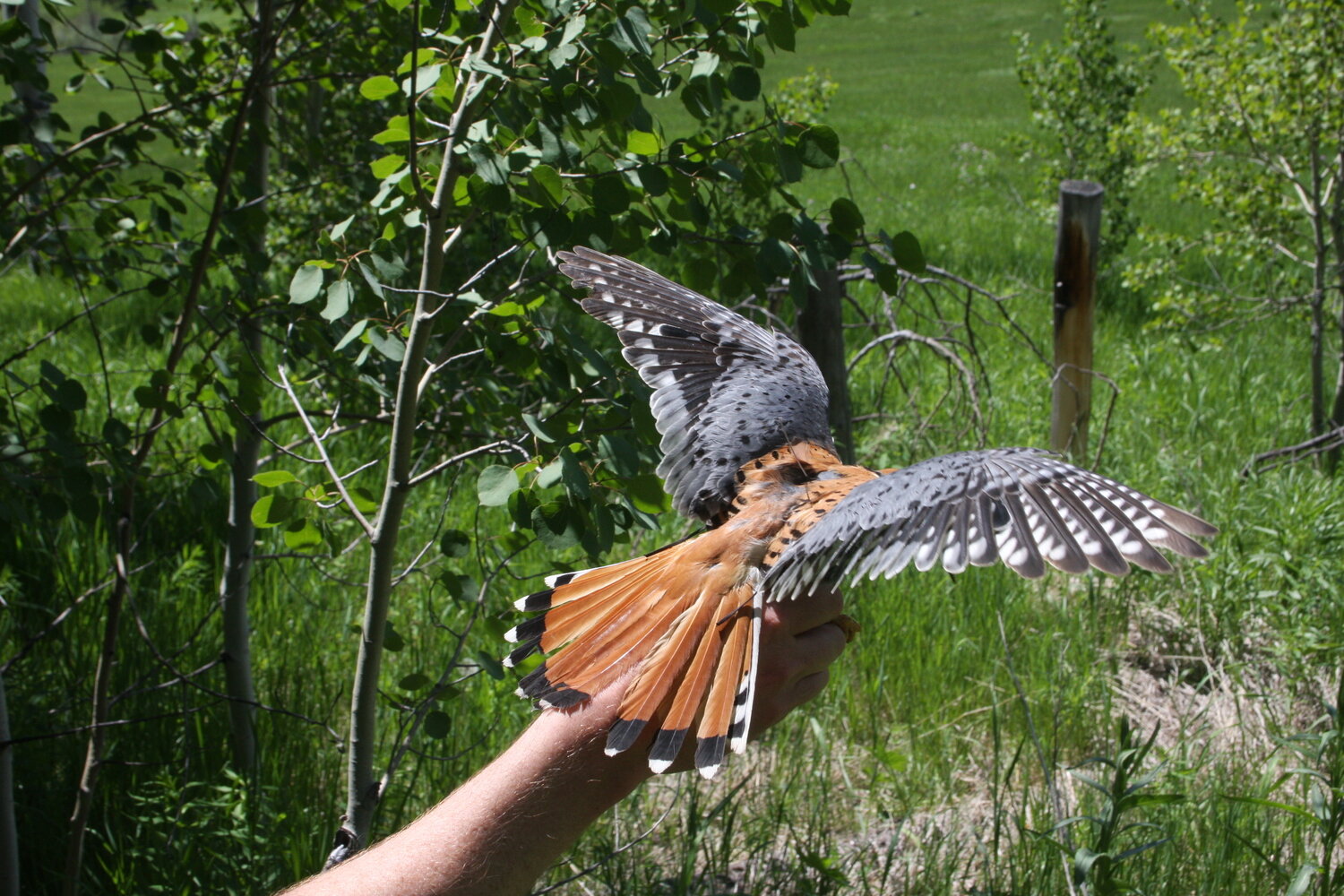Teton Kestrel Project
The American Kestrel (Falco sparverius) is a wide-ranging bird of prey which feeds on small mammals and birds and insects. It is one of the most colorful and ubiquitous of North American raptors. Unfortunately American Kestrel numbers have been declining at an alarming rate across North America from factors including predation, climate change, habitat loss and degradation and West Nile Virus. In Wyoming, Breeding Bird Survey data show declines in western Wyoming and at the statewide scale. Because of the apparent declines, American Kestrels are now considered a species of conservation concern in the state of Wyoming.
In response to long-term population declines of kestrels in our region, Craighead Beringia South initiated a multi-year and multi-faceted project in 2015 with the goal of maintaining or increasing the population of American Kestrels in the Jackson Hole area. Our project has three main categories which include 1) Monitoring, 2) Research, and 3) Education. Our monitoring effort was focused on both nest boxes and kestrels nesting in natural cavities. We deployed approximately 70 nest boxes in Teton County in the first two years of the project. We monitored all nest boxes through the 2019 nesting season. We also surveyed natural-cavity nesting kestrels nesting in our historic Blacktail Butte study area for the same direction.
Our research effort was focused on identifying critical breeding habitat in Teton County, identifying migration patterns, estimating adult survival, and understanding the dynamics and differences between kestrels using nest boxes and natural cavities. We used our monitoring effort as the core of our research but added both VHF, GPS, and Argos PTT tracking data to our arsenal. We outfitted approximately 15 adult kestrels with tracking devices, which is no small feat given the current limitations of tracking technology. The results of our tracking work included the first scientific publication using FPS data to identify American kestrel wintering locations and home range size. With funding from the Teton Conservation District, we completed an effort to identify critical breeding habitat for American kestrels in Teton County. We used data from natural-cavity nesting kestrels to preliminary identify kestrel habitat and then spent one summer validating and subsequently updating our model. The results was a robust analysis of kestrel habitat in the County, available to all interested parties through the CBS website. In addition to our effort locally, data collected in the Teton Kestrel Project is also being used by the Peregrine Fund’s American Kestrel Partnership to evaluate important influences to kestrels across the country. Data collection for the Teton Kestrel Project ended in 2019; manuscript preparation highlighting our pertinent results is underway and we predict the publication will be submitted in early 2022.
The education effort of the Teton Kestrel Project was through constant interaction with participating landowners, local presentations and we integrated portions of the project into a lesson plan at the Kelly Elementary School. Landowners were the foundation of our nest box monitoring program. We very much enjoyed interacting with landowners and fielding questions about kestrels and kestrel ecology. We conducted multiple local presentations about our project at venues including the Jackson Hole Wildlife Symposium and Jackson Hole Bird andNature Club and to broader audiences at the national American Kestrel Symposium. We were also fortunate to use the project as a vehicle to teach students at Kelly Elementary about the scientific process and worked with a local teacher to integrate concepts of wildlife biology and project-specific problem solving into STEM curriculum. The students loved real-world problem solving and used creativity and the tools available to them in the classroom to develop kestrel traps that fit inside nest boxes. The students also learned how we integrate what we see in the field into computer models. Lastly, we installed a nest box outside a classroom window so students could continually monitor activities that occurred.
Publications and Data
American Kestrel Wintering Location Identified Using a Global Positioning System Data Logger. (2019). Crandall, R. J., & Craighead, D. J. Journal of Raptor Research, 53(2), 223-226.
Reports (click to download)
Teton County Kestrel Habitat Final Report-2018
American Kestrel Survival Progress Report-2018
Teton County American Kestrel Habitat Files (click to download)
American Kestrel Habitat Layer for Google Earth
American Kestrel Habitat GeoTIFF

Kestrels prefer to nest in cavities of Cottonwood trees, growing along streams and rivers.

Students give a helping hand to Ross Crandall.

Students experience field research, helping to weigh and measure young Kestrels.

An adult male Kestrel being released with a tiny radio transmitter attached.

Nesting boxes were placed around the study area as part of the research.

A box full of young Kestrels.

